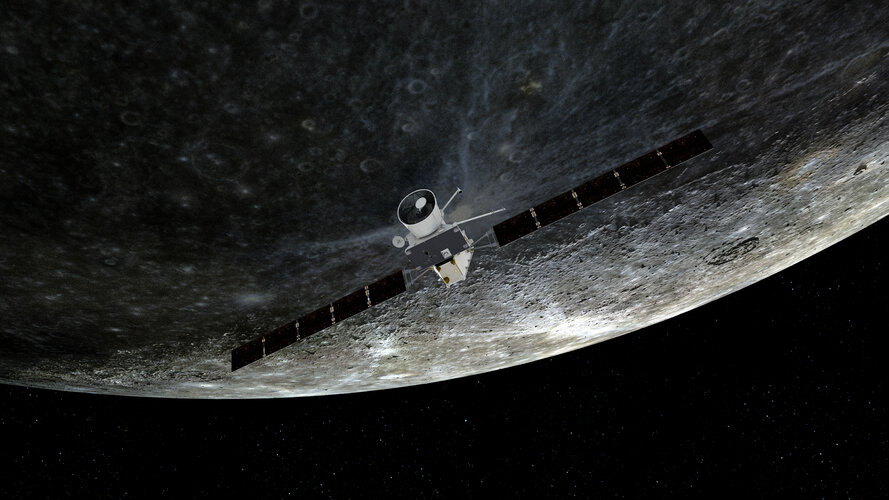
Copernical Team
S. Korea launches homegrown space rocket in 2nd such attempt

South Korea launched its first domestically built space rocket on Tuesday in the country's second attempt, months after its earlier liftoff failed to place a payload into orbit.
A successful launch would boost South Korea's growing space ambitions but also prove it has key technologies to build a space-based surveillance system and bigger missiles amid animosities with rival North Korea, some experts say.
The three-stage Nuri rocket carrying what officials call a functioning "performance verification" satellite blasted from South Korea's only space launch center on a small island off its southern coast at 4 p.m.
Officials are to announce the results of the launch later Tuesday.
In the first attempt last October, the rocket's dummy payload reached its desired altitude of 700 kilometers (435 miles) but didn't enter orbit because the engine of the rocket's third stage burned out earlier than planned.
If Tuesday's launch is successful, South Korea would become the world's 10th nation to place a satellite into space with its own technology.
South Korea, the world's 10th-largest economy, is a main supplier of semiconductors, automobiles and smartphones on world markets.
Space tech to be put to test on Asia-bound Fiat Panda

Two ESA engineers are offering a unique testbed for novel space technology: a second-hand, two-decade-old Fiat Panda, set to be driven 16 000 km to compete in the Mongol Rally from Europe to the Mongolian steppes during summer 2023. Having already taken part in the Panda Raid race to Morocco and back, the ‘space2ground’ team plans to perform on-board testing over the course of their epic Asiatic drive.
ESA to wow the Berlin International Airshow

Crowds at the Berlin International Airshow – which will focus on innovation, new technology and sustainability – are set to be wowed by space.
BepiColombo lines up for second Mercury flyby

The ESA/JAXA BepiColombo mission is gearing up for its second close flyby of Mercury on 23 June. ESA’s spacecraft operation team is guiding BepiColombo through six gravity assists of the planet before entering orbit around it in 2025.
Metaspectral wins funding from CSA to develop new greenhouse gas monitoring method
 Metaspectral, a software company delivering the next generation of computer vision, has received funding as part of the smartEarth Canadian Space Agency initiative to build a method to systematically and methodically quantify the carbon dioxide (CO2) levels present at ground-elevation using hyperspectral data.
Metaspectral has created a hybrid on-premise and cloud-based software platform t
Metaspectral, a software company delivering the next generation of computer vision, has received funding as part of the smartEarth Canadian Space Agency initiative to build a method to systematically and methodically quantify the carbon dioxide (CO2) levels present at ground-elevation using hyperspectral data.
Metaspectral has created a hybrid on-premise and cloud-based software platform t Directed Energy leader recaps time in AFRL, looks ahead to space position
 Dr. Kelly Hammett, who has led the Air Force Research Laboratory Directed Energy Directorate for the past six years, departed AFRL June 6 for his new assignment as director of the Space Rapid Capabilities Office (SpRCO), both located on Kirtland AFB.
"I will miss bragging on the Directed Energy team, and all that we accomplished in the six years I was in the director's seat," said Hammett.
Dr. Kelly Hammett, who has led the Air Force Research Laboratory Directed Energy Directorate for the past six years, departed AFRL June 6 for his new assignment as director of the Space Rapid Capabilities Office (SpRCO), both located on Kirtland AFB.
"I will miss bragging on the Directed Energy team, and all that we accomplished in the six years I was in the director's seat," said Hammett. New images using data from retired telescopes reveal hidden features
 New images using data from ESA (European Space Agency) and NASA missions showcase the dust that fills the space between stars in four of the galaxies closest to our own Milky Way. More than striking, the snapshots are also a scientific trove, lending insight into how dramatically the density of dust clouds can vary within a galaxy.
With a consistency similar to smoke, dust is created by dy
New images using data from ESA (European Space Agency) and NASA missions showcase the dust that fills the space between stars in four of the galaxies closest to our own Milky Way. More than striking, the snapshots are also a scientific trove, lending insight into how dramatically the density of dust clouds can vary within a galaxy.
With a consistency similar to smoke, dust is created by dy Dying stars could seed interstellar medium with carbon nanotubes
Are the Sun's magnetic arches an optical illusion
 From afar, the Sun appears blank and featureless in visible light. But through a solar telescope in different wavelength, it is revealed to be much, much more.
In extreme ultraviolet light, the Sun resembles a rumpled ball of yarn. It teems with giant radiant arcs known as coronal loops soaring through the Sun's corona, or outer atmosphere. Coronal loops are considered fundamental to the S
From afar, the Sun appears blank and featureless in visible light. But through a solar telescope in different wavelength, it is revealed to be much, much more.
In extreme ultraviolet light, the Sun resembles a rumpled ball of yarn. It teems with giant radiant arcs known as coronal loops soaring through the Sun's corona, or outer atmosphere. Coronal loops are considered fundamental to the S Martian meteorite upsets planet formation theory
 Anew study of an old meteorite contradicts current thinking about how rocky planets like the Earth and Mars acquire volatile elements such as hydrogen, carbon, oxygen, nitrogen and noble gases as they form. The work is published June 16 in Science.
A basic assumption about planet formation is that planets first collect these volatiles from the nebula around a young star, said Sandrine Pero
Anew study of an old meteorite contradicts current thinking about how rocky planets like the Earth and Mars acquire volatile elements such as hydrogen, carbon, oxygen, nitrogen and noble gases as they form. The work is published June 16 in Science.
A basic assumption about planet formation is that planets first collect these volatiles from the nebula around a young star, said Sandrine Pero 